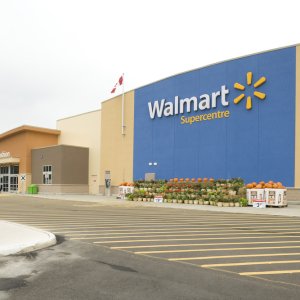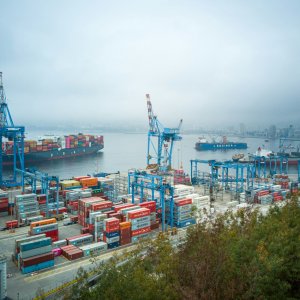Infrastructure Visibility: An E-Commerce Market Advantage

STORY INLINE POST
Q: How does the visibility obtained by VTEX's omnichannel solution create added-value for its clients?
A: VTEX has been an ecommerce market participant for the past 20 years, during which we have seen the market emerge, evolve and adapt to a growing digital landscape. As observed across adjacent industry sectors, companies that have learned to harness market insights from the data they collect have captured a larger market share. The accelerated horizontal expansion of companies across this digital landscape, however, has greatly reduced the visibility they have over their own infrastructures, compromising their ability to exploit data from these new endpoints.
VTEX’s omnichannel platform centralizes information spread out over this digital landscape, restoring companies’ ability to harness this invaluable market input. When further complemented with a consumer base, this technology allows companies to identify consumer habits, assess general market trends and evaluate the effectiveness of market offers across digital and physical market endpoints. Overall, this Customer 360 view is meant to help companies adapt their commercial and marketing strategies, explore new market niches and refine their product market fit at an individual level.
Q: The e-commerce boom observed over the past two years has engendered new opportunity streams for companies. How have these trends evolved?
A: The market avenues that gained momentum have transformed the very mature business-to-consumer market, inviting the growing participation of adjacent industry sectors.
Livestream shopping, conversational commerce and services have become highly competitive. Service is the most important point given that this is where companies stand to differentiate themselves and capture a wider consumer market, which is where VTEX comes in, giving companies the advantage they need. In Mexico this modality has started to take off.
Any company can become a marketplace and offer its own products or those of a third party. This makes marketplaces flexible, scalable and profitable. Since participation in these spaces allows businesses to access a greater consumer base at a reasonable commission, they bring benefits to all players. Within the last 12 months more companies, even across different industry sectors, have migrated to digital spaces.
On the B2B side, companies specializing in consumer products have rapidly digitized their value chains using the digital infrastructure offered by VTEX. Extending this digital channel to their vendors provides a smoother experience at a reduced cost, increasing sales while generating data about purchase habits, frequency of purchase and consumption by price at the micro and macro level.
Q: How Mexico's e-commerce market evolved over the past two years and how VTEX support its accelerated development?
A: During the first five years since VTEX’s arrival in 2014, the ecommerce market had grown steadily with greater smartphone use and internet penetration, but was observably bounded by consumer skepticism. The COVID-19 pandemic, while unfortunate, served as a catalyst for Mexico’s e-commerce market; which initially had companies scrambling for solutions that had the shortest time-to-revenue. VTEX aided this transformative process by helping clients get online as fast as possible, on average it was normally within 109 days, but in expedited cases we faced 3-to-4-week crunches. The sustained operability of our client’s platforms speaks to the out-of-box flexibility and robustness clients can expect. Moreover, VTEX was empathetic to the challenges our clients were facing, helping them operate and grow within their limitations, providing them with the answers that they needed on demand and helping them personalize their platform according to developing needs.
On the B2B side, through a singular marketplace infrastructure, we enabled the development of nontraditional business models. One example includes a client who used the infrastructure to showcase all of its consumer goods to all of its wholesale and retailer stores with the option to defer to the logistical partners that operated in their area. It was a completely contactless business model that did not require additional meetings, follow-ups or coordination with logistical confirmation which outlines the fluidity of the business potential this model offers. It was a significant market disruptor, and demonstrated great potential.
This attentive approach to B2C and B2B has allowed VTEX to grow its client portfolio to include Martin, Elektra, Walmart Central America, The University of Monterrey and most recently Chedraui to name a few.
Q: The benefits derived from VTEX's omnichannel are straightforward for enterprises, but how does this translate to SMEs?
A: VTEX’s omnichannel IaaS is a great commercial advantage given that it allows us to extend our services, technology, processes and best business practices to any business, regardless of its location and size. Cloud services, by democratizing access to technology and its consumption, have effectively removed an institutional barrier. VTEX contributes to shrinking disparities between businesses by providing the same value-added services, such as scalability and reduced time to market and operational and logistical costs to all players. All these services can be accessed through a convenient payment subscription model if necessary.
Q: How does Mexico's e-commerce market stand to benefit from the 5G revolution?
A: Mexico’s ecommerce performance has been among the Top 5 in the world, alluding to the growth potential of the sector and the expanding purchasing power of Mexican consumers.
The deployment of a 5G network is on the horizon, which will revolutionize the singular-channel shopping experience and provide immersive shopping, remote control of assets and a closer relationship between sellers and consumers. These benefits are brought about by the flexibility and openness that companies can get through platforms like VTEX, which will allow all digital assets to communicate via our digital platform.
The e-commerce boom will likely intersect with the growing internet penetration in Mexico, a perfect storm where retail and e-commerce will redefine and optimize their commercial approach.
Q: What objectives does the company have for 2022?
A: This year VTEX has three principal objectives in Mexico, starting with cementing our brand as the top-of-mind business partner for companies and retailers. That is to say, that when they think of ecommerce solutions, they automatically associate VTEX’s expertise as a product of the know how our personal contributes from their professional experience to the ecommerce industry. The second, continue growing and consolidating non-traditional B2B business models that can encompass new industries such as Finance, Professional Services, Health, Education and others. Finally, our last goal is to substantially increase our participation as strategic business associates to the top 10 retailers in Mexico so that we may help them discover new business avenues needed for a dynamic ecommerce market.








 By Cinthya Alaniz Salazar | Journalist & Industry Analyst -
Thu, 04/21/2022 - 09:43
By Cinthya Alaniz Salazar | Journalist & Industry Analyst -
Thu, 04/21/2022 - 09:43
















